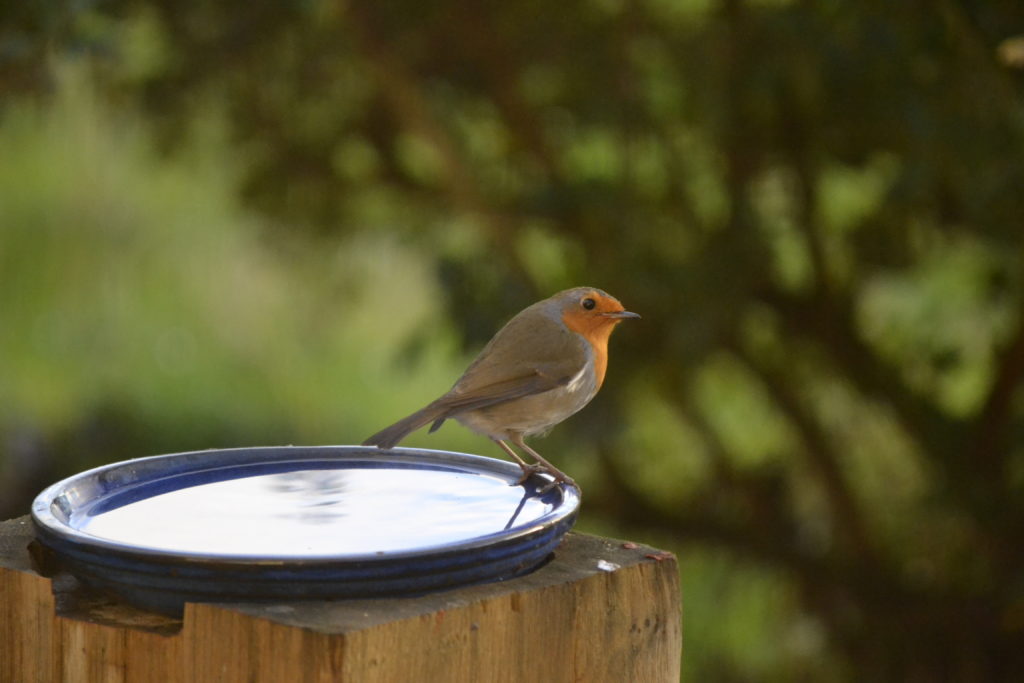A guide to feeding wild birds in your garden
Feeding the birds that visit your garden is one of the best and easiest ways to help wildlife flourish. As well as them being wonderful to watch, youre not only supporting adult birds through tough times, you are also helping to increase the survival rate of chicks and ensuring different species are thriving. With climate change (and damage) to your bird’s natural environments, every little thing you are able to do will help all year round – so here is a little bit of information to help you get the best out of feeding your garden birds.
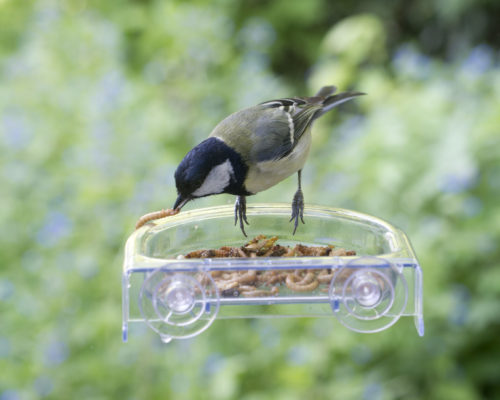
What should you feed wild birds?
Most birds will eat a varied diet of insects, worms, slugs, snails and spiders as well as fruit, seeds, nuts and buds. We are then able to offer supplementary foods that will top up their energy levels and ensure they are fighting fit to survive in their tough little worlds, but what can these supplementary foods consist of?
A wide range of specific food is available, as well as a variety of ways in which to offer them. Seed Mixes are always one of the first choices for people to feed as they contain a variety of seeds which will appeal to and attract a wide variety of species such as sparrows, tits, finches and starlings. All our mixes consist of a different mixture of seed and a variety of energy levels, meaning they are suitable for feeding year round.
Straight seeds are also available such as black sunflower and even dried mealworms, which can be extremely beneficial at different times of the year due to them being high in fat and protein. Peanuts are also a tasty, basic food for wild birds, as well as being high in oil (fat) and protein. Suet is a firm favourite, loved by a wide variety of birds throughout the year – suet products can range from fat balls to coconut halves and suet blocks to suet pellets. These suet foods are loved by tits, robins, blackbirds, woodpeckers, finches, and more rare spots such as nuthatches and black caps.
It is important to remember that different species will have different eating habits and different food needs to be offered in specific feeders. For example, blackbirds do love fruit and mealworms, however, they will not land on a tube hanging feeder as they are ground and table eaters. A good idea for blackbirds is to either scatter food, such as suet pellets, on the ground underneath some shrubs, or pop some of our Robin & Songbird mix onto a flat table for them to access.
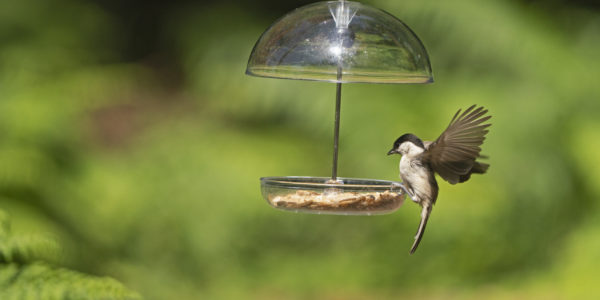
Peanuts for example, have got to be fed in a mesh feeder, so the birds can pick at them. However, many birds are not clinging eaters, so they wont cling onto the mesh whilst feeding – these species prefer a perch. Please also be aware that you should never feed whole peanuts outside of a mesh feeder, this is because the birds need to eat these broken down otherwise this could increase the risk of them choking – especially if they try to feed them to their young. Kibbled peanuts are a great alternative if you want to feed peanuts on the ground or table. For seed, you need a solid feeder, preferably with several ports with perches; if you try to put seed in a peanut feeder, most of it will fall through the mesh.
The best advice we could give is to feed in as many different ways as you can. Mix up your ground feeding with your hanging feeders, try to have more than one place to feed from and have a few different feeding areas around your garden. The more variety of feeding opportunities you offer, the wider the variety of birds you will attract.
Feeding in winter
To have the most beneficial impact on the birds in your local environment, and even to attract them into your garden frequently, it is important to feed them all year-round. Even if this is just a small amount, you will have more success if you are consistent, and that means feeding in the summer and winter.
In late autumn, your birds will go into their moult phase, where they shed their summer feathers and grow new ones ready for the winter. This process can take up to five weeks, and can also drain a lot of energy. During these weeks, the temperature will be dropping, especially at night, so they must have access to an abundance of food (they will also be trying to build up fat reserves in the readiness for the cold winter months). There is very likely not going enough natural food to go round, with some mating pairs having up to 5 broods of 5-6 chicks throughout the summer, a lot of the natural food will already have been stripped. On top of this, after the hotter months of summer, the ground can be quite hard making it difficult to dig worms and other grubs.
During the depths of winter, it can be hard for your birds to find enough natural food for them to have enough energy to stay warm through the dark, and cold nights. On top of this, the daylight hours they would normally forage for food are cut much shorter.
Foods such as our high-energy with suet, or sunflower hearts, are very beneficial foods to offer at this time of year, and you may find that your birds will throw other seeds away, just looking for the sunflower hearts within your mix. This is because the birds know which are the best seeds and foods (aren’t they clever little things!). Suet products and fat balls are easy to grab and digest and you will like see a faster turnover of these types of products during the winter months.
You must always offer clean water for drinking and bathing. During these months any water you offer can freeze over, so please ensure its de-iced. Its imperative that birds can drink through the winter as well as the summer and they need to clean as this ensures their feathers are perfect for helping to keep them warm through the long cold nights.
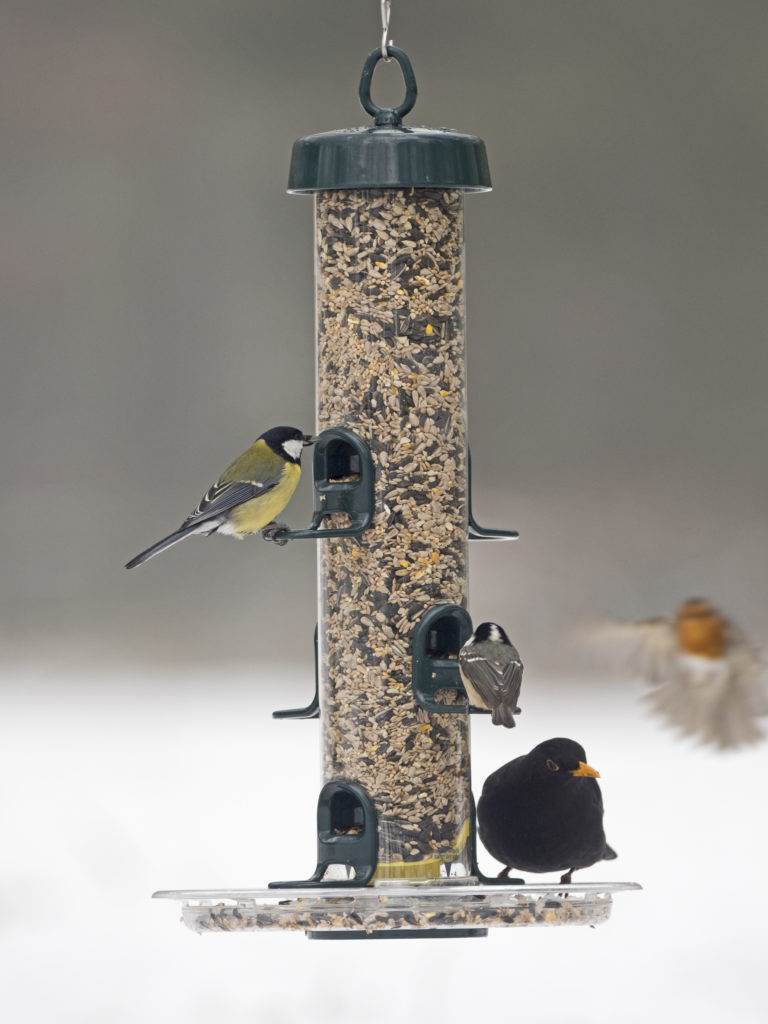
Feeding in summer
Traditionally, most households would stop feeding during the summer months as natural food used to be abundant during these months. However, much more up to date research and thinking shows that the summer months could now be the most important time to supplement your birds diets.
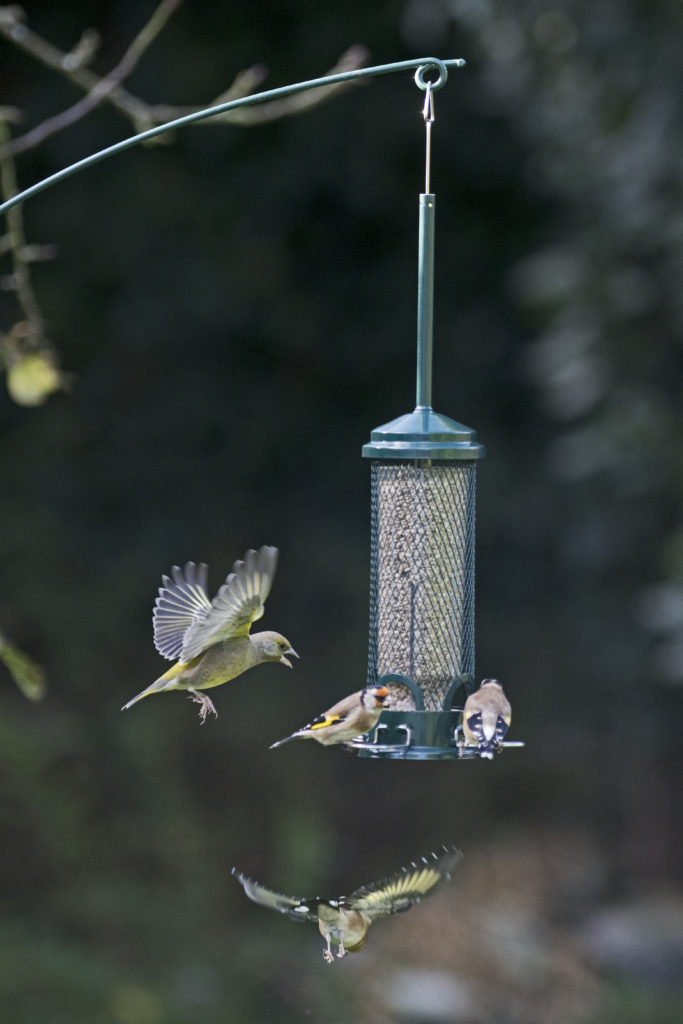
There are many reasons for this; firstly, birds are extremely busy during the spring and summer months. Their spring starts off with finding mates and nest building, then egg production and laying, through to nest sitting and raising their chicks. As you can imagine, this requires a lot of energy! Whilst there is still natural food available (albeit in much smaller quantities due to a decline in insects over the last few decades), parent birds will always favour raising their chicks on natural food sources. Although this is favourable, not only will they rely on the food we provide to feed themselves while they’re foraging and raising their chicks. They will also need to feed this supplementary food to their young as there is just not enough natural food available in current times.
During the extreme, hotter summers we are now experiencing, the problems for your birds trying to find natural food sources increases. The ground dries up, meaning they have no access to the worms, grubs and insects that live underground and much of their water sources can dry up. During these days, it is important to keep offering food and water to keep your birds healthy and stable.
Many varieties of food are suitable for feeding in the summer, mixes are loved as they contain a number of smaller seeds suitable for the baby chicks, and kibbled peanuts are a great source for them as they’re high in oil and protein to give them the growing energy the need. Another great trick is to rehydrate dried mealworms in some water, these will almost feel like real worms to the birds and their chicks. This will also make them much easier for the chicks little to eat.
Suet will be great for parent birds who will need to have high energy food they can quickly pick up whilst flying back and forth to their nests. Just be careful not to place soft suet in full daylight sun as it can melt. Peanut butter is also a great choice as you can mount the feeders on a shed or fence out of the intense heat, and its a quick and easy food source for the adult birds, plus its soft if needed to be fed to the chicks.
Once the parents have done their jobs (until the next brood arrives!) the chicks will fledge. It is so wonderful to watch the parent birds helping their youngsters find food, and watching their parents still feeding the babies, is one of the most heart warming things to see. You will see a large number of parents bringing their young to their feeders that they have been relying on all spring and summer, and there could be 3-4 times the number of hungry beaks looking for food.
We have had some wonderful stories from our customers of how parent birds will use the food we provide to teach their young how to look for natural food. One of the loveliest has to be a parent woodpecker taking nibbles from a peanut feeder and placing it in a slit in a wooden post for the youngsters to come and peck out! This is one of the reasons birds are so fascinating and wonderful to watch – we also gain so much from it.
How often should you feed the birds?
Once you start to feed birds in your garden, it is advised that you continue to regularly top your feeders up so that you never have the feeder empty – this could be a daily top up, or every few days. By keeping your feeders full, you will encourage and attract many more birds, who will recognise and get used to the food you feed in your garden.
If these birds get used to coming to your garden for food, if they suddenly find it isnt there any more, they will have to find an alternative source, meaning they may start to get used to feeding elsewhere. This will increase competition with other birds and will probably mean you will lose them from your garden space too.
Whilst ensuring you always have feeders topped up, you must ensure that this is done hygienically. With so many birds visiting feeders in close proximity, disease and infection can spread quickly, and they can even carry it back to their nests. It is advised to clean your feeders monthly, or as often as you can, with a soft, non-toxic disinfectant. Brush or scrape down your bird tables and spray them with hygiene spray too. Cleaning brushes are very useful when you are trying to clean tubular feeders. Along with cleaning, ensure the food stays fresh. When you top up, it is advisable to mix your slightly older feed with the fresher seed to ensure rotation and try to avoid the same food being left at the bottoms of the feeders for too long.
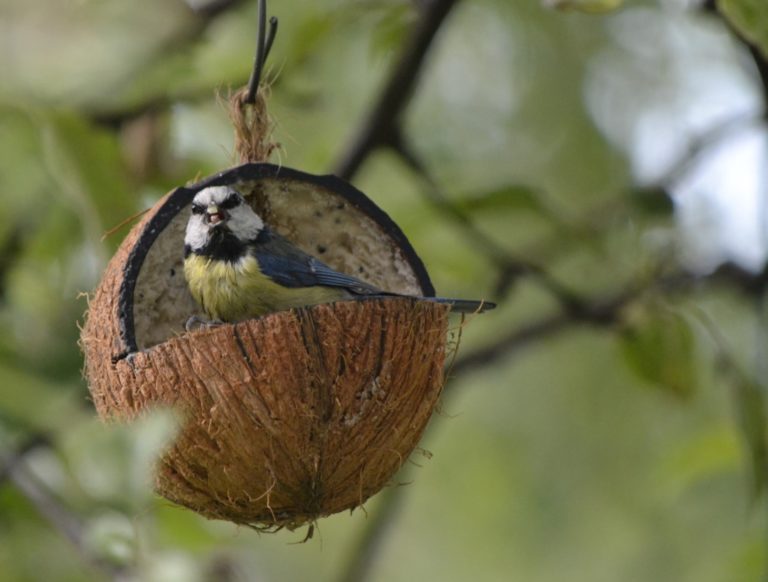
Benefits of feeding your garden birds year-round
In order to give and receive the greatest benefits of feeding your feathered friends, the best advice is to feed all year round. We have given some ideas into what you can feed at different times of the year, and why it is so important to feed all year round. There have been several studies from the RSPB and British Trust for Ornithology (BTO) showing how numbers of birds have fallen since the mid 1900s, but also shows an increase in the numbers and species of birds coming to garden feeders.
Whilst your garden birds are wild creatures, they would rather eat natural food that they have foraged and hunted – this just goes to show how much they rely on us to ensure their survival. However, there is such limited availability of wild food that they are now reliant on our help.
All year round feeding will help them at many important stages of their years, but it also means you will keep the birds you’ve cared for, all year round. Once they are used to you feeding, they will come to expect it and rely on it.
We guarantee if you start or are already feeding birds in your garden you will be getting a huge amount of joy from it. Also, you will feel some responsibility that you are doing ‘the right thing’. Wildlife needs a huge helping hand to ensure its survival, with the current climate challenges all of our wildlife and wild areas are facing, whether our efforts are big or small, everything we can do will help.
There is nothing like getting to know the feathered friends that visit your garden – whether you build a bond with a particularly cheeky Robin, or you get excited to see a completely new species landing on your feeder. Hopefully now you will feel a little more equipped to start or improve your bird feeding journey!

